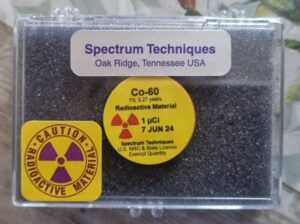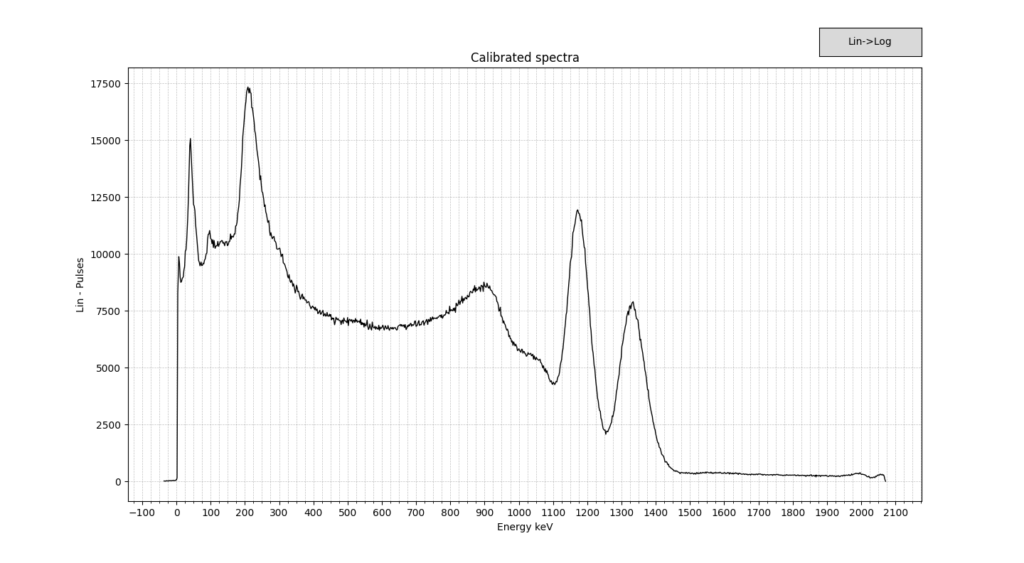I recently acquired a 1µCi Cobalt-60 (Co-60) source from Spectrum Techniques, and it got me thinking about the fascinating journey and diverse applications of this remarkable isotope. In this post, I’ll delve into how Co-60 is produced, its crucial role as an industrial isotope, and its significance in gamma spectroscopy.

What is Cobalt-60?
Cobalt-60 is a synthetic radioactive isotope of cobalt with a half-life of approximately 5.27 years. It decays by beta decay to stable nickel-60, emitting gamma radiation in the process. The two primary gamma photons produced have energies of 1.17 MeV and 1.33 MeV, making Co-60 an excellent source of high-energy gamma rays.
How is Cobalt-60 Produced?
The production of Co-60 involves neutron activation of cobalt-59 (Co-59), a stable isotope of cobalt. This process typically occurs in a nuclear reactor where Co-59 is exposed to a flux of neutrons, converting it into Co-60 through the following reaction:
Co-59+n→Co-60
After irradiation, the newly formed Co-60 is separated and purified for various applications.
Industrial Applications of Cobalt-60
Co-60 is a versatile isotope with several critical industrial applications:
- Radiation Therapy: Co-60 is widely used in medical treatments, especially in radiotherapy for cancer patients. Its gamma rays are effective in targeting and destroying malignant cells.
- Sterilization: The high-energy gamma radiation from Co-60 is used to sterilize medical equipment, pharmaceuticals, and even food products, ensuring they are free from pathogens and contaminants.
- Industrial Radiography: Co-60’s penetrating gamma rays are employed in non-destructive testing (NDT) to inspect metal parts and welds for structural integrity without causing damage. It’s a crucial tool in sectors like aerospace, construction, and manufacturing.
- Tracers: In environmental studies, Co-60 is used as a tracer to follow the movement of cobalt through natural systems, aiding in the study of soil erosion, water movement, and pollutant dispersion.
Cobalt-60 in Gamma Spectroscopy
Gamma spectroscopy is a powerful technique used to analyze the energy and intensity of gamma rays emitted by radioactive substances. Co-60 is a preferred source for calibrating gamma spectroscopy equipment due to its well-defined gamma emission lines.
